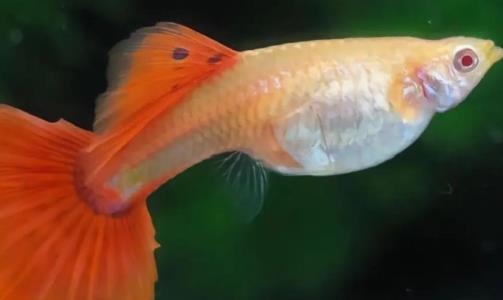How to Determine if a Guppy is Pregnant: Key Signs to Observe
You can tell if a guppy is pregnant by comprehensively checking for the following signs:

1. Changes in Abdominal Shape
Shape Transformation: A pregnant female guppy’s abdomen will gradually change from a rounded arc to a square or conical shape. When viewed from the side, it appears pointed at the front and wide at the back; from above, it looks triangular.
Abdominal Firmness: In the late stages of pregnancy, the abdomen feels hard to the touch, similar to a "small box." In contrast, the abdomen of a guppy that has overeaten remains soft.
Visible Fry: As birth approaches, you may be able to see the outlines of the fry’s eyes or a slight glow through the mother’s belly.
2. Changes in Gravid Spot Color
Common Varieties: The gravid spot (near the anus) shifts from light gray to dark black. The darker the color, the closer the guppy is to giving birth.
Albino Varieties: The gravid spot of albino guppies starts as pale yellow and turns orange-red or orange when pregnant.
Spreading Range: The gravid spot expands toward the area in front of the anus as the pregnancy progresses.
3. Behavioral and Physical Traits
Decreased Appetite: Due to compressed intestines, the female guppy may stop eating, and its breathing rate will increase.
Hiding Behavior: It often hides among aquatic plants or in corners, and swims either slowly or restlessly.
Protruding Genital Pore: Right before birth, the anus protrudes about 1 millimeter and takes on a triangular shape.
4. Differentiating from Overeating or Illness
Overeating: The abdomen is rounded and will shrink after one night of fasting. The gravid spot shows no changes.
Dropsy (Abdominal Swelling): The abdomen takes a conical shape, with a larger "head" and smaller "tail" end. Immediate treatment is required.
5. Pregnancy Care Recommendations
Isolation Timing: Once a dark gravid spot or square-shaped abdomen is observed, immediately isolate the guppy in a breeding tank.
Water Quality Requirements: Maintain the water temperature between 26–28°C (78.8–82.4°F) and keep ammonia levels below 0.02 mg/L. When changing water, do so gently.
6. Important Notes
Avoid frequently startling the pregnant guppy, as this may cause premature birth or difficulty in delivery.
Use fine-leaved aquatic plants or a breeding box in the birthing tank to prevent the mother from eating her fry.
Promptly remove any stillborn fry after birth to prevent water quality deterioration.
By comprehensively observing the above signs, you can accurately determine if a guppy is pregnant and provide proper care accordingly.
